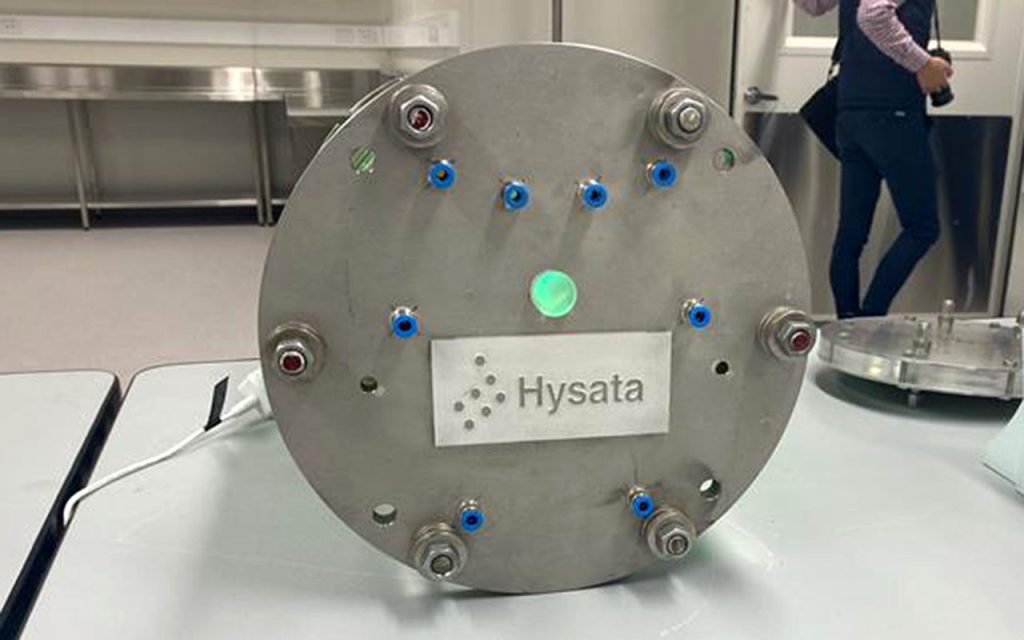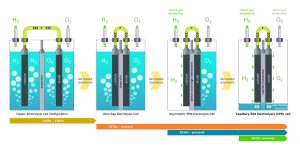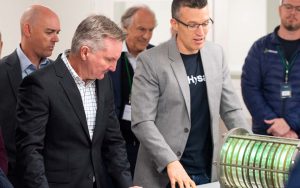Hysata to build next-generation hydrogen electrolyser
A pioneering, all-Australian hydrogen electrolyser technology is one step closer to proving itself at a commercial scale.

A pioneering, all-Australian hydrogen electrolyser technology is getting the chance to prove itself at a commercial scale.
If it works, the project has the potential to transform the economics of renewable hydrogen production.
ARENA’s support has helped develop this new technology since it was a concept in a University of Wollongong laboratory. That work saw a spin-off company, Hysata, established to commercialise the development.

Now, Hysata will receive $20.9 million ARENA funding as part of a $47.5 million project. Hysata will build and test a 5 MW system at its new Port Kembla manufacturing facility.
The plan then is to move the entire system to Rockhampton in Queensland, for installation and trials next to the Stanwell Power Station.
Queensland government-owned power company Stanwell Corporation is providing the site and facilities, and also backing the project with $3 million.
ARENA CEO Darren Miller says the project is a crucial step to enabling purchase orders for the technology.
“Hysata’s electrolyser technology could be a game-changer for renewable hydrogen,” Mr Miller said.
“The demonstration at Stanwell’s site will be key to unlocking commercial demand for Hysata’s product by proving the technology works at scale.
Currently, the production cost of renewable hydrogen (using renewable energy) is at least twice that of hydrogen produced from fossil fuels. Hysata says its technology will slash costs and produce hydrogen “well below” a competitive target price of $2 per kilogram (approx. US$1.50/kg).
FYI, if there’s one number you should remember, it is that price of $2 per kilogram. That’s the key to competing with fossil fuel-derived hydrogen and fully unlocking renewable hydrogen’s industrial and energy future.
How does Hysata’s technology work?
All electrolysers work by passing an electric current from electrodes through H2O – water. The current splits the water into its two parts, hydrogen and oxygen. That process takes energy.
Now, if the entire process were 100 per cent efficient, all that energy would go into splitting the water. Nothing else.
But, until now, electrolysers have also produced a lot of heat. That’s because, just like an electric heater at home, they have electrical resistance.
The heat generated is not only wasted energy, but it must also be removed. Electrolysers need a lot of cooling and that uses even more energy.
So, if you can reduce resistance, a greater proportion of energy is available to split the water. Also, the system generates far less far less heat, which in turn requires less cooling.

Hysata has tackled the problem by completely redesigning their electrolyser to remove all the main sources of electrical resistance.
It turns out, that means eliminating hydrogen and oxygen bubbles. When bubbles form on the electrolyser’s electrodes, they reduce the surface area available for electrolysis and increase resistance.
In fact, Hysata says it has completely eliminated bubbles from its system and cut electrical resistance to virtually zero. As a result, Hysata says it expects a fully operational electrolyser will stay cool through good air ventilation alone.
The combined effect is what has raised the overall efficiency of a Hysata electrolyser to around 95 per cent. That’s a huge jump on current technologies, which operate with efficiencies closer to 75 per cent.
To put that in context, to make renewable hydrogen competitive with its fossil-fuel derived alternative, the International Renewable Energy Agency (IRENA) in 2020 set an electrolyser efficiency target of up to 85 per cent … by 2050.
‘Game-changing, homegrown innovation’

Opening the new manufacturing facility, Minister for Climate Change and Energy Chris Bowen said: “We’re delighted to support game-changing, homegrown innovation that will power our future as a clean energy manufacturer and a renewable energy superpower.”
Hysata CEO Paul Barrett said this was a significant milestone.
“Green hydrogen is critical for decarbonisation of hard-to-abate sectors. We are committed to helping our customers deliver the world’s lowest cost green hydrogen,” he said.
“With exceptional 95% efficiency combined with cost-effective materials and reduced engineering, procurement and construction (EPC) costs, Hysata’s electrolyser will transform the economics of green hydrogen production.”
Stanwell CEO Michael O’Rourke said Hysata represented an important step in developing Queensland’s renewable hydrogen industry.
“The development of a renewable hydrogen industry is a key component of our energy transformation,” he said.
“The potential to utilise high efficiency Australian technology in large-scale hydrogen projects would be a real advantage.”
Initial development of the system is currently underway, with the field pilot at Stanwell due to commence in 2025.

Andrew Webster